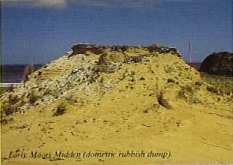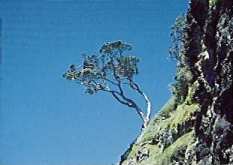The Maori

Early Maori Midden (domestic rubbish dump)

The Pohutukawa tree - spiritually significant to the Maori
Traditional accounts indicate that the Maori ancestor, Po, of the canoe Kurahaupo, probably arrived at Muriwhenua (the far north) from Hawaiiki about 500 years ago and that there were people living there even before that time. In the middle of the 18th century, the Aupouri tribe began moving into the area from the south under pressure from the Ngapuhi tribe. During the early 19th century, intertribal warfare was frequent in the area of Te Paki. Te Aupouri were set upon by the Rarawa tribe from the south of the peninsula and by one faction of the Ngapuhi tribe headed by the fighting chief Hongi Hika.
As a result of these wars the north was depopulated for a time during the 1830s, but after about 1840 Te Aupouri began to move back to their former territories and settlements. Today, most of the Maori in the area live in or around the township of Te Hapua. They still own 22 percent of the land north of Parengarenga Harbour, much of which has been converted to exotic afforestation. The whole of this northern tip of the North Island is steeped in Maori tradition and in the heritage of their past. It is, in fact, the most spiritually significant area in the country for it is here that after death all Maori spirits travel to the Pohutukawa tree on the headland of Cape Reinga and descend into the underworld (reinga) by sliding down a root to fall into the sea below. They climb out again on to Ohaua, the highest point of the Three Kings Islands, to bid their last farewell before returning to the land of their ancestors.
Within the boundaries of the park there are about 700 Maori archaeological sites, fortified pa and storage sites.
The large number of these, together with the fact that they are not threatened by land use, make the area one of the more important archaeological resources in New Zealand. Care is being taken to keep the sites intact and to preserve and respect the spiritual and cultural heritage of the Maori people.

